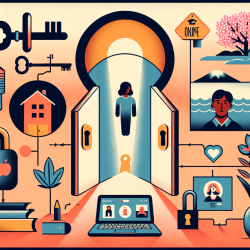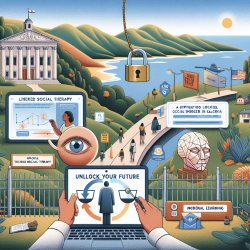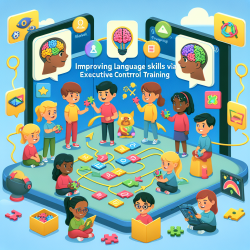In the rapidly evolving landscape of educational support services, technology is emerging as a critical tool in bridging gaps and ensuring equitable access to essential therapies. At TinyEYE, we are at the forefront of this transformation, offering innovative online therapy services to schools. This article aims to shed light on how technology is revolutionizing speech therapy in educational settings and why government health regulators should consider taking the next step to support and implement these advancements.
The Challenge of Accessibility
One of the most significant challenges in providing speech therapy to students is accessibility. Many schools, particularly those in rural or underserved areas, struggle to attract and retain qualified speech therapists. This shortage leaves countless students without the necessary support to overcome their speech and language difficulties, ultimately affecting their academic performance and social interactions.
Technology as a Solution
Online speech therapy, also known as telepractice, is an innovative solution that leverages technology to deliver high-quality therapeutic services remotely. Through secure video conferencing platforms, licensed speech therapists can connect with students in real-time, providing personalized interventions that are just as effective as in-person sessions.
Benefits of Online Speech Therapy
- Increased Accessibility: Telepractice breaks down geographical barriers, ensuring that students in remote or underserved areas receive the support they need.
- Cost-Effectiveness: By reducing travel time and associated costs, online therapy can be a more economical option for schools and districts.
- Flexibility: Online sessions can be scheduled at convenient times, minimizing disruptions to the student's academic schedule.
- Data-Driven Outcomes: Digital platforms allow for the collection and analysis of data, enabling therapists to track progress and adjust interventions as needed.
The Role of Government Health Regulators
Despite the clear benefits, the adoption of online speech therapy in schools is not without its challenges. Regulatory frameworks and funding models have traditionally been designed with in-person services in mind, creating barriers to the widespread implementation of telepractice. This is where government health regulators can play a pivotal role.
By updating regulations to explicitly include online therapy services, regulators can ensure that schools have the flexibility to choose the most effective and efficient methods for delivering speech therapy. Additionally, allocating funding specifically for telepractice initiatives can help schools invest in the necessary technology and training to implement these services successfully.
Next Steps
As government health regulators, you have the power to drive significant improvements in the accessibility and quality of speech therapy services for students. Here are some actionable steps to consider:
- Review and Update Regulations: Assess current policies and make necessary adjustments to support the inclusion of online therapy services.
- Allocate Funding: Designate specific funds for telepractice initiatives to help schools invest in technology and training.
- Promote Awareness: Educate schools and districts about the benefits of online speech therapy and provide resources to support implementation.
- Monitor and Evaluate: Establish metrics to track the effectiveness of online therapy services and make data-driven decisions to optimize outcomes.
Conclusion
The integration of technology into speech therapy services is not just a trend; it is a necessary evolution to meet the diverse needs of students across the country. By taking proactive steps to support and regulate online therapy, government health regulators can ensure that all students have access to the high-quality interventions they deserve. At TinyEYE, we are committed to partnering with schools and regulators to make this vision a reality.
We invite you to join us in this transformative journey. Together, we can harness the power of technology to create a more inclusive and effective educational environment for every student.










